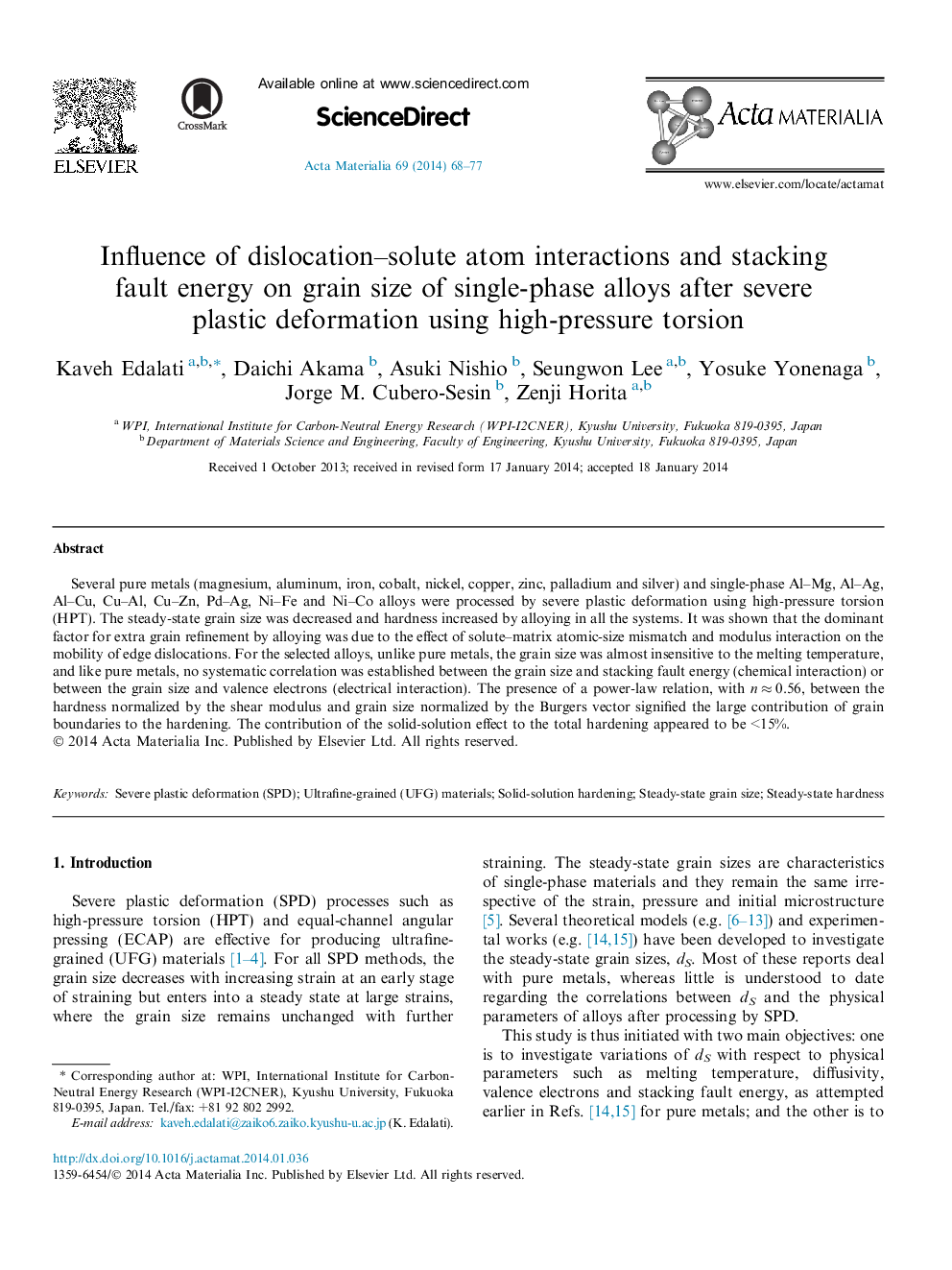| Article ID | Journal | Published Year | Pages | File Type |
|---|---|---|---|---|
| 7882141 | Acta Materialia | 2014 | 10 Pages |
Abstract
Several pure metals (magnesium, aluminum, iron, cobalt, nickel, copper, zinc, palladium and silver) and single-phase Al-Mg, Al-Ag, Al-Cu, Cu-Al, Cu-Zn, Pd-Ag, Ni-Fe and Ni-Co alloys were processed by severe plastic deformation using high-pressure torsion (HPT). The steady-state grain size was decreased and hardness increased by alloying in all the systems. It was shown that the dominant factor for extra grain refinement by alloying was due to the effect of solute-matrix atomic-size mismatch and modulus interaction on the mobility of edge dislocations. For the selected alloys, unlike pure metals, the grain size was almost insensitive to the melting temperature, and like pure metals, no systematic correlation was established between the grain size and stacking fault energy (chemical interaction) or between the grain size and valence electrons (electrical interaction). The presence of a power-law relation, with n â 0.56, between the hardness normalized by the shear modulus and grain size normalized by the Burgers vector signified the large contribution of grain boundaries to the hardening. The contribution of the solid-solution effect to the total hardening appeared to be <15%.
Related Topics
Physical Sciences and Engineering
Materials Science
Ceramics and Composites
Authors
Kaveh Edalati, Daichi Akama, Asuki Nishio, Seungwon Lee, Yosuke Yonenaga, Jorge M. Cubero-Sesin, Zenji Horita,
